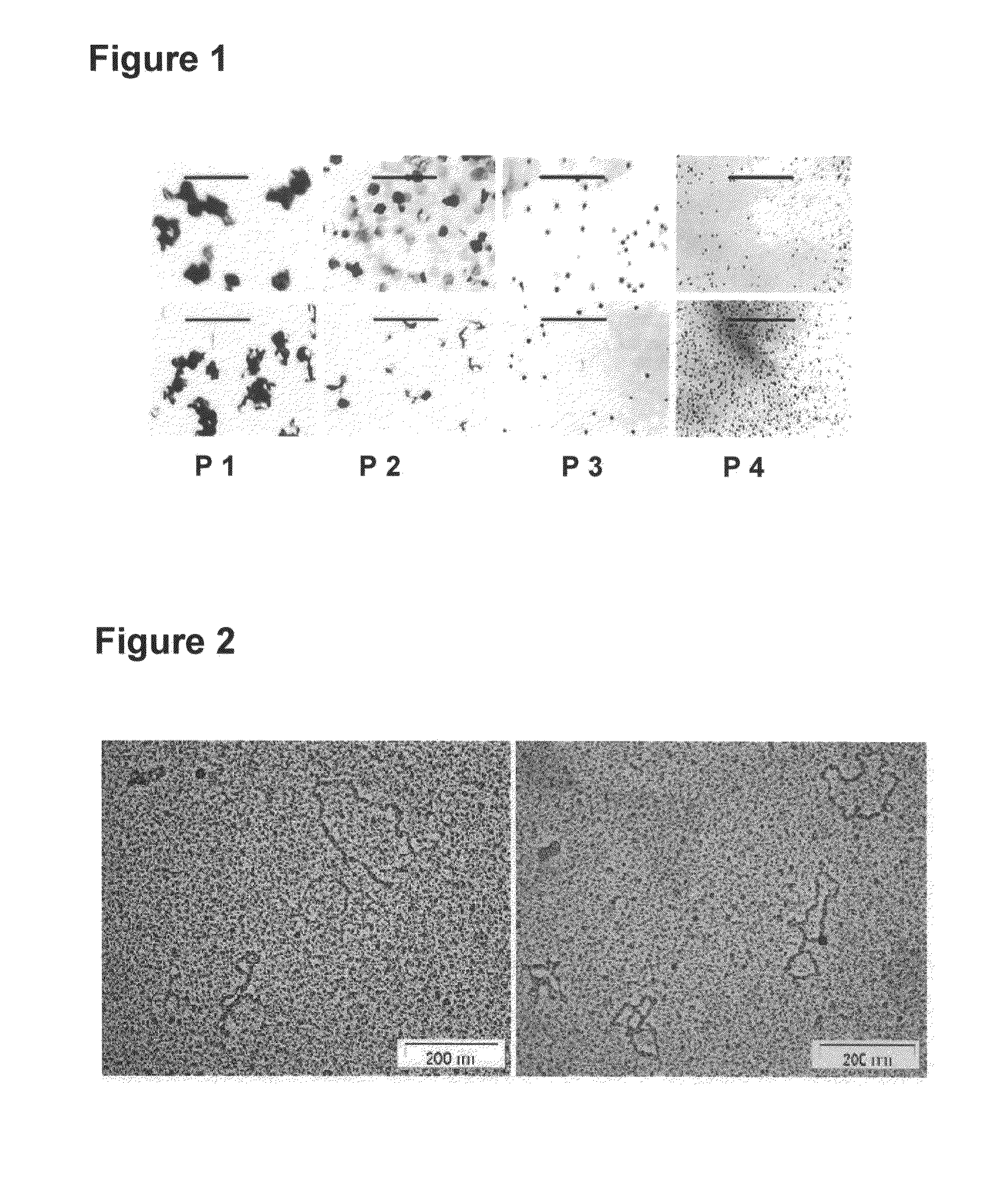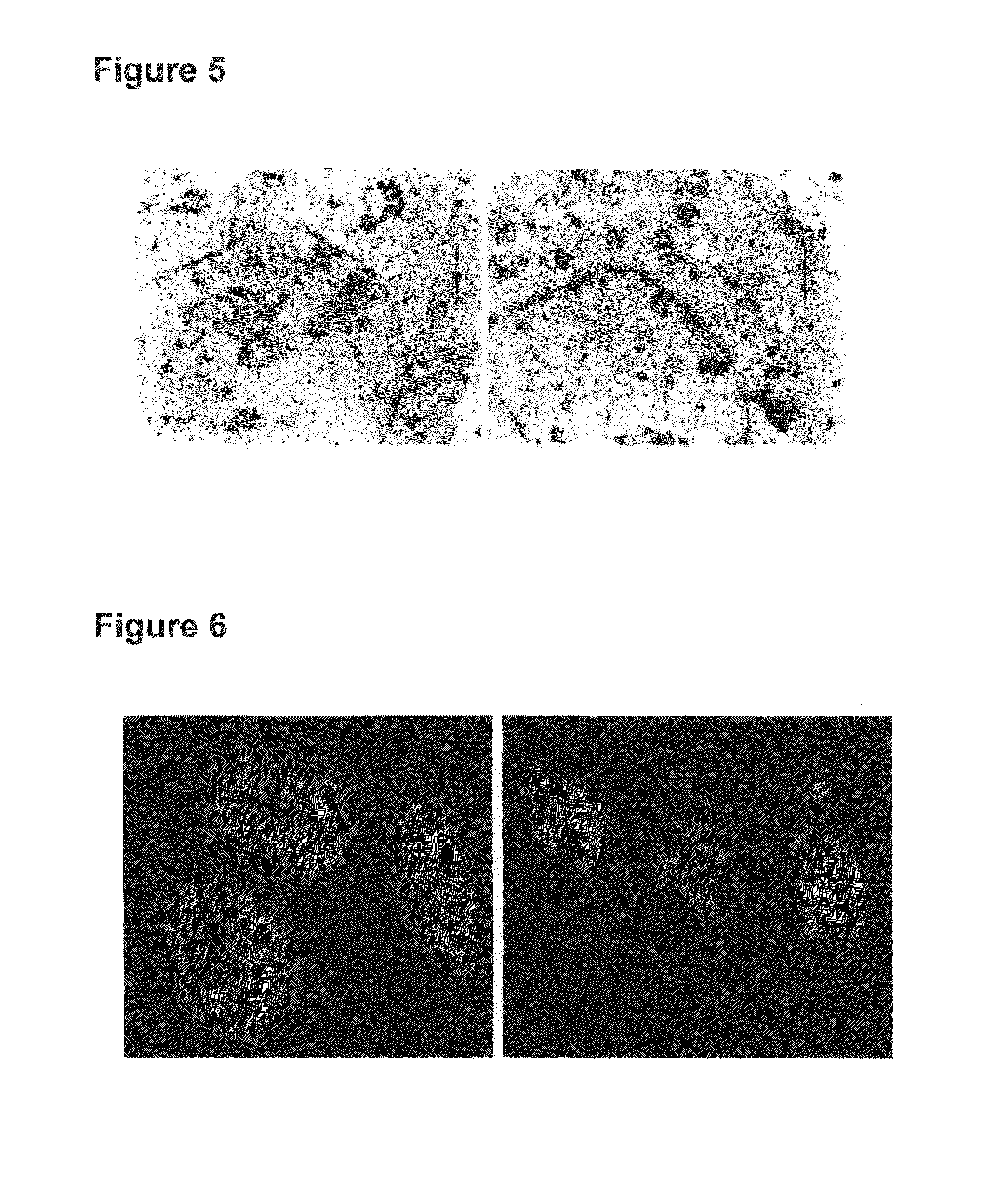Method for ex-vivo separation of apoptotic chromatin fragments from blood or plasma for prevention and treatment of diverse human diseases
a technology of apoptotic chromatin and blood, which is applied in the field of ex-vivo separation of apoptotic chromatin fragments from blood or plasma for prevention and treatment of diverse human diseases, can solve the problems of engulfed chromatin/dna degrade, non-ingestion, and inability to efficiently clear apoptotic bodies from the body,
- Summary
- Abstract
- Description
- Claims
- Application Information
AI Technical Summary
Benefits of technology
Problems solved by technology
Method used
Image
Examples
examples
Cell Culture
[0098]It is sought to be demonstrated that when apoptotic chromatin fragments derived from normal or cancerous cells or those purified from serum / plasma of normal subjects and patients suffering from several disease conditions including cancer are added to recipient cells in culture, the chromatin fragments are ingested by them wherein they get integrated in their genomes and induce DNA damage, chromosomal instability, senescence, apoptosis, oncogenic transformation and other deleterious effects. The various recipient and donor cells used for the purpose are listed below. All cell lines are obtained from American Type Culture Collection (ATCC), USA. The ATCC Numbers are as follows:
NIH3T3 (ATCC No.: CRL-1658)—Embryonic mouse fibroblast
B16F10 (ATCC No.: CRL-6475)—Metastatic mouse melanoma
Jurkat (ATCC No.: CRL-TIB-152)—Human lymphocytic leukemia
NCTC Clone 1469 (ATCC No.: CCL-9.1)—Normal mouse liver
MM55.K (ATCC No.: CRL-6436)—Normal mouse kidney
B / CMBA.Ov (ATCC No.: CRL-6331)...
PUM
| Property | Measurement | Unit |
|---|---|---|
| sizes | aaaaa | aaaaa |
| pore size | aaaaa | aaaaa |
| pore size | aaaaa | aaaaa |
Abstract
Description
Claims
Application Information
 Login to View More
Login to View More - R&D
- Intellectual Property
- Life Sciences
- Materials
- Tech Scout
- Unparalleled Data Quality
- Higher Quality Content
- 60% Fewer Hallucinations
Browse by: Latest US Patents, China's latest patents, Technical Efficacy Thesaurus, Application Domain, Technology Topic, Popular Technical Reports.
© 2025 PatSnap. All rights reserved.Legal|Privacy policy|Modern Slavery Act Transparency Statement|Sitemap|About US| Contact US: help@patsnap.com



